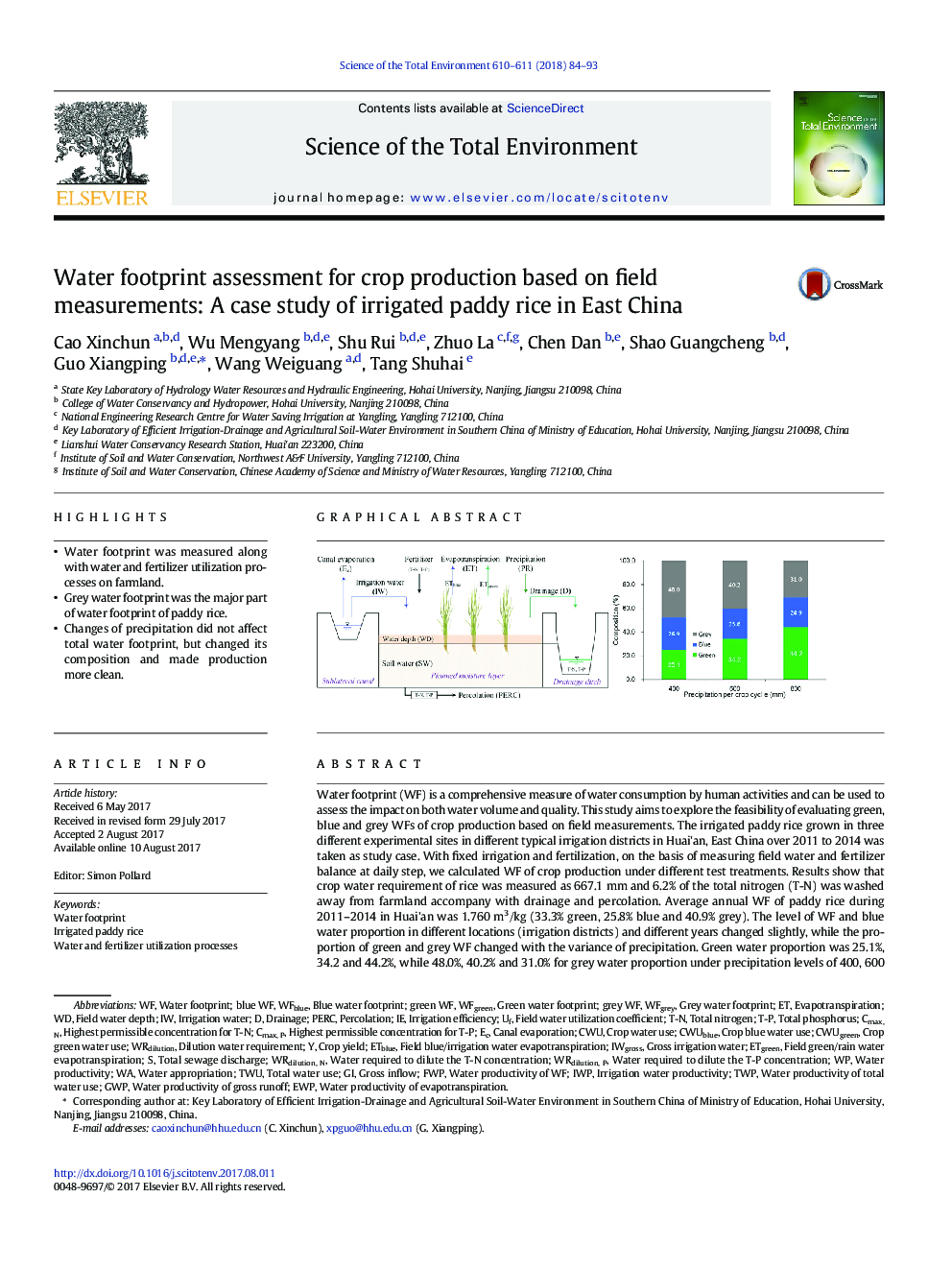| کد مقاله | کد نشریه | سال انتشار | مقاله انگلیسی | نسخه تمام متن |
|---|---|---|---|---|
| 5750175 | 1619692 | 2018 | 10 صفحه PDF | دانلود رایگان |
- Water footprint was measured along with water and fertilizer utilization processes on farmland.
- Grey water footprint was the major part of water footprint of paddy rice.
- Changes of precipitation did not affect total water footprint, but changed its composition and made production more clean.
Water footprint (WF) is a comprehensive measure of water consumption by human activities and can be used to assess the impact on both water volume and quality. This study aims to explore the feasibility of evaluating green, blue and grey WFs of crop production based on field measurements. The irrigated paddy rice grown in three different experimental sites in different typical irrigation districts in Huai'an, East China over 2011 to 2014 was taken as study case. With fixed irrigation and fertilization, on the basis of measuring field water and fertilizer balance at daily step, we calculated WF of crop production under different test treatments. Results show that crop water requirement of rice was measured as 667.1Â mm and 6.2% of the total nitrogen (T-N) was washed away from farmland accompany with drainage and percolation. Average annual WF of paddy rice during 2011-2014 in Huai'an was 1.760Â m3/kg (33.3% green, 25.8% blue and 40.9% grey). The level of WF and blue water proportion in different locations (irrigation districts) and different years changed slightly, while the proportion of green and grey WF changed with the variance of precipitation. Green water proportion was 25.1%, 34.2 and 44.2%, while 48.0%, 40.2% and 31.0% for grey water proportion under precipitation levels of 400, 600 and 800Â mm, respectively. The reduced grey WF was due to increased drainage. This study not only proved the feasibility of assessing WF of crop production with field experiments, but also provided a new method for WF calculation based on field water and fertilizer migration processes.
91
Journal: Science of The Total Environment - Volumes 610â611, 1 January 2018, Pages 84-93
